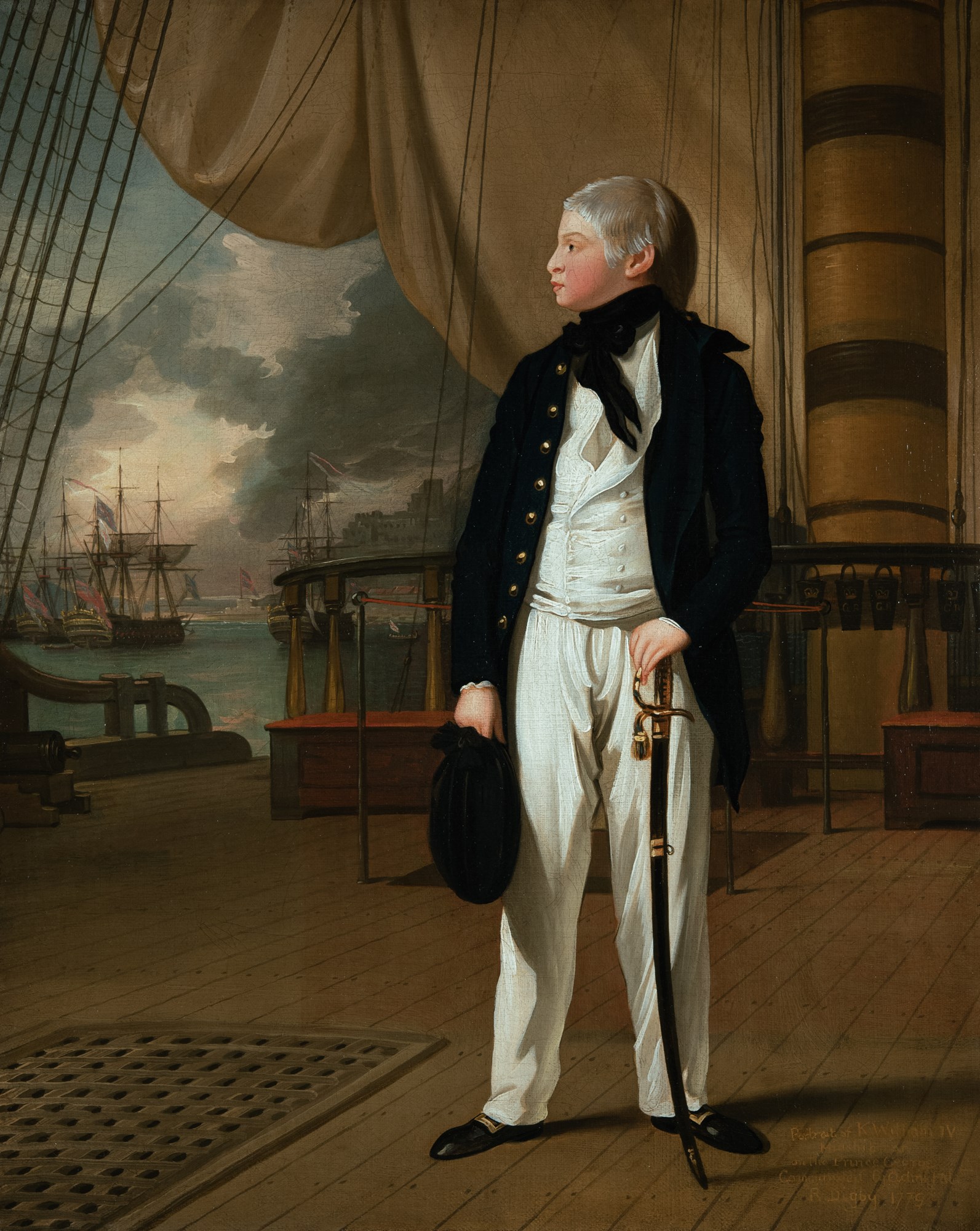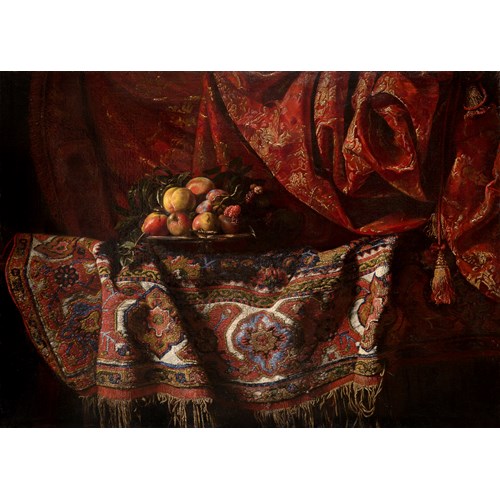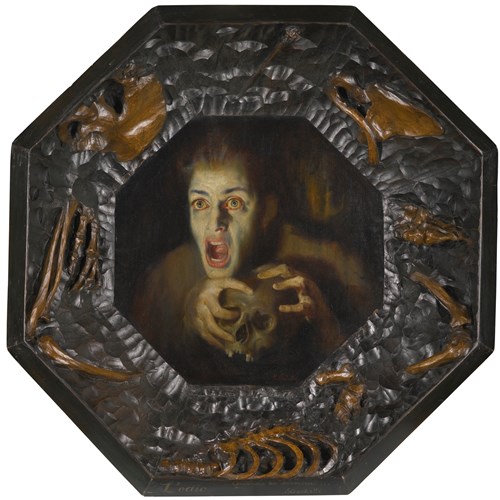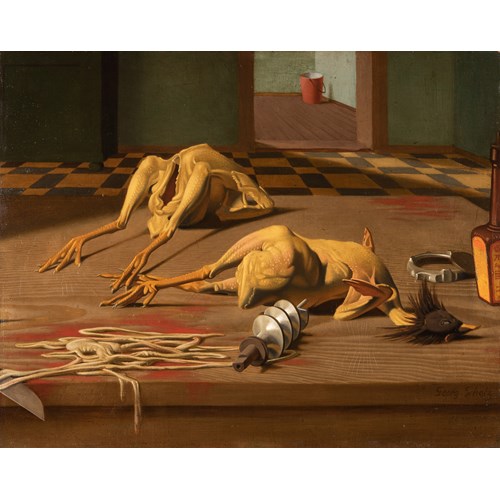Benjamin West
Prince William as a Midshipman
Date 1781
Medium Oil on canvas
Dimension 53.34 x 43.18 cm (21 x 17 inches)
In 1780 he was on board when the Prince George took part in the Battle of Cape St Vincent and tradition has it that he was recognised by the Spanish Admiral Don Juan de Langara, who had been captured during the battle and exclaimed: ‘Well does Great Britain merit the empire of the sea, when the humblest stations in her navy are supported by Princes of the Blood!’. Later that year he sailed with the Prince George for America. Whilst in New York with the British Fleet the Prince was the subject of a plot, hatched by George Washington and his agents, to kidnap him and Admiral Digby (fig. 1), though the British found out before it could be put into action. The present picture, painted in 1781, captures the Prince at this period of his life, in the naval uniform of a midshipman, sword in hand, standing on the deck of Digby’s ship whilst stationed in America.
In 1785 William was promoted to Lieutenant and then Captain the following year, taking command of HMS Pegasus, a 28-gun Enterprise-class frigate (which he commanded until 1789). In late 1786 the Prince was stationed in the West Indies under Horatio Nelson, who wrote of William’s conduct as a naval officer that: ‘In his professional line, he is superior to two-thirds, I am sure, of the [Naval] list; and in attention to orders, and respect to his superior officer, I hardly know his equal’.
Nelson and the Prince became great friends, dining together almost nightly whilst stationed together in the West Indies, and William insisted on giving the bride away at Nelson’s wedding to Fanny Nisbet on the island of Nevis in 1787. In 1788 William was given command of the 32-gun HMS Andromeda and the following year was promoted to Rear-Admiral in command of the 74-gun ship of the line HMS Valliant. In 1827 the Prince, by then Duke of Clarence and St Andrews, was appointed Lord High Admiral and so strong was his association with the Navy for the rest of his life, when he ascended to the throne at the age of sixty-four, he was nicknamed the ‘Sailor King’ .
As an old label attached to the reverse of the frame confirms (fig. 3), this painting appears to have been a gift from Prince William's father, King George III, to Admiral Robert Digby, presumably in gratitude for having watched over his son at sea and in memory of his service aboard HMS Prince George. West worked extensively for the Royal family and produced a number of portraits of the King, Queen and their many children and was one of the King's favoured artists, though he was never actually appointed as Principal Painter in Ordinary, that position being held by Sir Joshua Reynolds and Thomas Lawrence during West's lifetime. Following Digby's death without issue in 1815 the painting, along with the rest of his estate at Minterne Magna, was inherited by his nephew, Henry Digby, himself an Admiral of the Blue.
Admiral Henry Digby’s father was the Hon. Rev. William Digby, Chaplain Ordinary to King George III, and he joined the Navy in 1783 (also at the age of thirteen), serving as a captain’s servant on HMS Jason and then HMS Vestal, before being transferred in the same capacity to the Royal Yacht Royal Charlotte. He served with the Royal Yacht until the end of the year, when he was promoted to Abel Seaman, and shortly after Midshipman, aboard HMS Europa, with which he sailed for the West Indies. Digby was to spend the next two and a half years aboard the 50-gun Europa in the Caribbean, before serving on the North American Station in 1787–88. Only four and a half years younger than the Prince, Henry Digby and William would certainly have known each other, serving as they both were as junior officers in the Caribbean, especially with Digby’s connections to the Royal family and the Prince having served under his uncle as a midshipman. Henry Digby later went on to command HMS Africa with distinction at the Battle of Trafalgar, and held senior command in the 1820s and ’30s, when the Prince was Lord High Admiral.
This painting was unknown to von Effra and Staley (see Literature) when they wrote their 1986 catalogue raisonné of West's work, and was catalogued by them purely based upon the engraving after it by Francesco Bartolozzi and Paul Sandby, published in January 1782. A second engraving, by W. Day and published by Rudolf Ackermann, was released in 1832 with title 'His Majesty William IV When Midshipman in the Year 1781'. They associated the original oil with a painting that was sold by West's sons, together with the remaining contents of the artist's studio, in London, Robins, 20–22 June 1829, lot 69, described as ‘Whole-length portrait of HRH the Duke of Clarence, represented in the naval uniform of a midshipman on the deck of a ship of war’. King George III had been dead for nine years by the time of this sale and Admiral Robert Digby for fourteen years.
However, it has recently come to light that two versions of this composition exist, both of which appear to be autograph and of a similar quality. The provenance of the other version, also previously unknown, would strongly suggest that it was the one sold by West's sons in the posthumous studio sale of 1829, therefore lending added credence to the old inscription on the back of the original frame of this painting, which identifies it as having been a gift to the original Admiral Digby from the King.
HMS Prince George, upon whose deck the Prince is depicted, was a 90-gun second-rate ship of the line, launched in 1772 at Chatham. She served under Admiral Rodney during the American Revolutionary War and, as well as seeing action at the Battle of Cape St Vincent in 1780, at which Prince William served, was seventh in line during the famous British attack on the French Fleet at the Battle of the Saintes off Dominica in 1782.
Date: 1781
Medium: Oil on canvas
Signature: Inscribed, lower right: Portrait of K. William IV Midshipman on the Prince George commanded By Admiral R. Digby 1779
Inscribed on a label, verso: Portrait of King William IV as a Midshipman, when he joined Admiral the Hon.ble Robert Digby's ship the Prince George June 1779 (label torn) ..en to Admiral Digby by King Geo. III.
Dimension: 53.34 x 43.18 cm (21 x 17 inches)
Provenance: Commissioned by the sitter's father, King George III and given by him to his son's commanding office, Admiral Robert Digby (1732-1815);
By descent to his nephew, Admiral Sir Henry Digby (1770–1842);
By descent to his son, Edward Digby, 9th Baron Digby (1809-1889);
Thence by descent to Lord Digby, Minterne House
Sale, London, July 7, 2021, lot 48
Literature: H. von Erffa and A. Staley, The Paintings of Benjamin West, New Haven and London 1986, p. 476, no. 569 (as ‘location unknown’, reproduced from the Bartolozzi and Sandby aquatint engraving).
Exhibition: London, Sotheby’s, Rule Britania, 1986, no. 74
More artworks from the Gallery






_T638881148926056744.jpg?width=500&height=500&mode=pad&scale=both&qlt=90&format=jpg)


